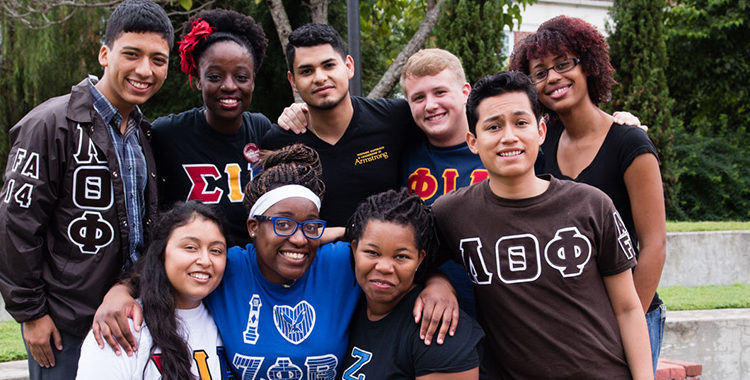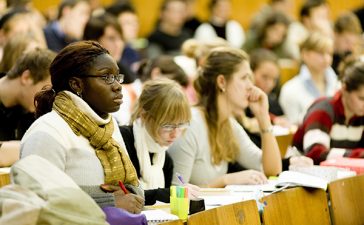Recent decades have witnessed increasing interconnectedness across borders. Countries or issues which were previously unfamiliar or distant have become immediate in ways we were previously able to ignore. This includes health issues such as Ebola or Zika, migration (for example, crossing the Mediterranean or from Central America to the United States), politico-religious movements including jihadi extremism and financial crisis, for instance, the collapse of the subprime mortgage market in the USA in 2007.
Each illustrates the extent to which local or regional issues can quickly acquire global implications. In addition, climate change and global warming show how global issues carry significant local effects on areas such as food, health, water and the ecosystem.
The coronavirus pandemic is the most recent, and in an immediate way, the most extreme example.
De-globalisation?
Even before the current crisis provoked nationalist cries to close borders, introduce travel bans, restrict trade in life-saving equipment and shield individual economies, globalisation had provoked tensions and dissent due to its uneven effects and inequalities. The backlash fuelled criticism of international organisations and calls to withdraw from multilateral structures and processes.
Brexit’s desire to ‘Take Back Control’ and United States President Donald Trump’s call to ‘Make America Great Again’ led to a fracturing of the post-World War II consensus.
In addition to the United Kingdom’s intention to withdraw from the European Union and the European Court of Justice, the US has either withdrawn or indicated its intentions to withdraw from, inter alia, UNESCO, the Paris Agreement on climate change, the Universal Postal Union, the Compulsory Jurisdiction to the Vienna Convention on Diplomatic Relations, the Trans-Pacific Partnership, the Joint Comprehensive Plan of Action, the Intermediate-Range Nuclear Forces Treaty and the World Trade Organization.
Higher education has also had ambivalent relations with globalisation. There is a large academic literature criticising the role of international organisations, such as the OECD and the World Bank, for promoting neo-liberalism and the marketisation of education. Academics were fervent critics of GATS’ inclusion of higher education as an internationally traded-service. But, by the time higher education had raised its objections, that horse had effectively bolted.
Previous decades had already witnessed explosive growth in international education services and specialised training fields. Universities and academics alike gained entry to new educational markets (for example, branch campus and education products) and wider access to the best resources and talent on a global scale, often using global rankings to elevate themselves and keep others out.
These tensions and contradictions were also apparent during the recent Brexit debate in the UK.
Universities had been active leaders of and enthusiastic participants in the European Higher Education Area and international partnerships for decades. But the relationship was more of a transactional one, characterised by pursuance of EU research funding and international student income, with students seen pejoratively as ‘cash cows’. There was much less a sense of higher education institutions appreciating the value of international interconnectedness for the benefit of humanity.
Underlying architecture of internationalism
The current pandemic gives us a good opportunity to take a fresh look at the key enablers of international higher education and global science.
The Human Genome Project, formally launched in October 1990, remains the world’s largest biological project, involving 20 universities and research centres in the US, UK, Japan, France, Germany and China, and setting a model for multilateral collaboration in pursuit of a common good.
The UN adoption of the 2030 Agenda for Sustainable Development in 2015 recognised that societal problems were territorially blind, and that no country has the knowledge or research capacity or capability to solve such challenges on their own. Xin Xu recently highlighted the role played by open science in the search for a vaccine for COVID-19.
ISCED, the International Standard Classification of Education, developed by UNESCO in 1976, was an important precedent for the myriad qualifications frameworks used to compare and validate credentials across countries.
The Bologna Declaration brought coherence across disparate European national systems and facilitated the formalisation of the European Research Area and the European Higher Education Area. Many other regions are working similarly around the world.
We see the ingredients of an evolving underpinning architecture of multilateral cooperation – the guidelines, protocols, frameworks and regulations which provide the essential lubricant for the international higher education and science system.
There is an interconnected web of governments, policy-makers, non-state and societal actors, universities and other higher education institutions and academics and researchers working across and within formal, informal and non-formal arrangements. However, many of these initiatives are bilateral or voluntary.
My own research has identified more than 1,000 organisations working in different ways to ensure recognition of academic and professional qualifications, quality assurance and accreditation, credit transfer facilities, student admissions and mobility protocols, intellectual property rights, policy advocacy and so on.
Making multilateralism real
Higher education and research are international in their orientation, and as Philip Altbach and Hans de Wit say, “depend on globalisation”. However, there is no international forum that brings higher education together with government ministers, senior civil servants and organisations to discuss key issues of global concern and identify common solutions – thus, making multilateralism real.
The lessons of history show us that the best response to international challenges is international collaboration. In recent weeks, Saad Javid Satti has proposed a “healthier multilateralism” and Damtew Teferra has called for a new Marshall Plan. But what are the mechanisms?
We underestimate the value of ongoing structured international dialogue, coordination, processes and tools at our peril. Crises highlight the necessity for practical solutions. Perhaps the current global health crisis will lead to recognition of the need for structured dialogue. Now is the time to establish an international assembly for higher education and global science to promote and sustain international collaboration.







